| Article ID | Journal | Published Year | Pages | File Type |
|---|---|---|---|---|
| 3154184 | Journal of Oral and Maxillofacial Surgery | 2009 | 6 Pages |
PurposeTo evaluate postoperative bleeding and thromboembolic complications during dental extractions in anticoagulated patients, using 2 different protocols.Patients and MethodsIn total, 214 anticoagulated patients in need of simple dental extractions were randomized into 2 groups. Group A consisted of 109 patients on continuous oral anticoagulation therapy (OAT), with a mean international normalized ratio (INR) of 2.45 ± 0.54. Local hemostasis in these patients was achieved with resorbable collagen sponges, without wound suturing. Group B consisted of 105 patients on bridging therapy with low-molecular-weight heparin (nadroparin-calcium), with a mean INR of 1.26 ± 0.11 on the day of the procedure. Neither local hemostatic agents nor suturing of the wound was used in these patients.ResultsEight (7.34%) patients in group A and 5 (4.76%) patients in group B manifested postextractional bleeding, without statistical significance (χ2, Yates' = 0.253, P > .05). All cases of hemorrhage were mild and easily controlled using local hemostatic measures. None of the participants in either group experienced thromboembolic complications.ConclusionsIn patients receiving OAT with an INR ≤4.0, simple dental extractions can be performed safely without interruption or modification of OAT, using local hemostatic measures. Suturing of the wound should be reserved for cases with a greater extent of surgical trauma, and when primary hemostasis is insufficient. There is no need for bridging therapy with low-molecular-weight heparin in patients undergoing minor dentoalveolar procedures, although this approach can be used in patients with major oral surgical interventions.
